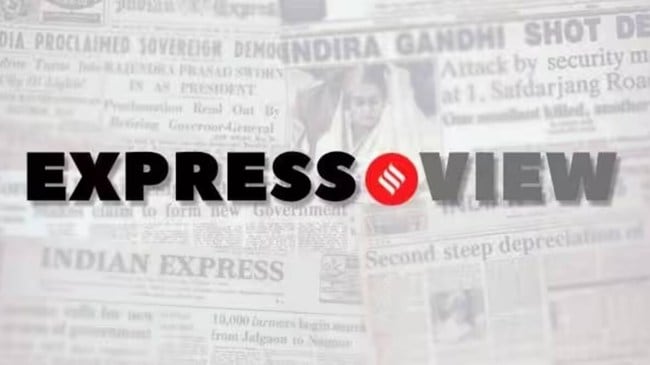Opinion Express View: Quake in Nepal
Pent-up discontent has pushed the country's youth to take to the streets. New Delhi should keep a close eye on how the situation unravels
 It should be alert to a Bangladesh-like regime change and be ready to safeguard India’s interests amid the flux.
It should be alert to a Bangladesh-like regime change and be ready to safeguard India’s interests amid the flux. The message from Nepal, where Prime Minister K P Sharma Oli resigned on Tuesday amid the worst unrest in years, is clear: Ignore the youth at your peril. The social media ban by a fossilised leadership out of touch with realities in a young country was a trigger. Nepal’s youth were frustrated with crumbling health and education systems, and disillusioned by entrenched corruption and nepotism. That their anger erupted after the ban on 26 platforms, including Facebook, WhatsApp, Instagram, X, and YouTube, reflects a deeper churn in the Himalayan nation. The government’s brutal response, which left at least 19 dead and more than 200 injured, has only fuelled the rage of the youth. Protesters, who defied curfew orders, torched the homes of ministers and senior politicians, including that of the ousted PM.
The “Gen Z” demonstrations should be seen against the backdrop of Nepal’s fraught political landscape. As this newspaper reported, almost every senior political leader in the country faces some form of corruption charge. They include Oli and five former prime ministers — Sher Bahadur Deuba, Prachanda, Madhav Nepal, Baburam Bhattarai, and Khil Raj Regmi. The misgovernance has led to nationwide discontent. On social media, terms such as “Nepo Babies” and “Nepo Kids” have been trending, as the lavish lifestyles of political family scions are contrasted with the economic hardships of ordinary citizens, especially the youth, who have faced unemployment and low wages. Inequality, compounded by climate vulnerabilities and natural disasters, has driven many young Nepalis to leave the country. According to a World Bank report, 82 per cent of the workforce remains in informal employment, far above global and regional averages. Meanwhile, power has continued to circulate among the same ageing, colluding leaders through shifting alliances of convenience in what has become a cartelisation of politics. Disenchantment has grown to such an extent that protests, earlier this year, demanded a return to the monarchy, abolished in 2008 after a decade-long civil war. The recycling of political leadership also shines a light on a disturbing reality — the youth lacked a meaningful political channel to voice their grievances. It’s no surprise that they took to the streets.
This is not the first time in the recent past that youth-led movements have toppled regimes in India’s neighbourhood. Last year in Bangladesh, anti-quota protests snowballed into a full-fledged anti-government uprising that ended Sheikh Hasina’s 15-year rule. In Sri Lanka, in 2022, corruption and economic mismanagement that led to soaring inflation and acute food and fuel shortages sparked a revolt that brought down the Rajapaksa family. India should continue to monitor the situation in its neighbourhood and remain vigilant. In the wake of the turmoil in Nepal, New Delhi should keep a close watch on how the political situation in the country unravels. It should be alert to a Bangladesh-like regime change and be ready to safeguard India’s interests amid the flux.




